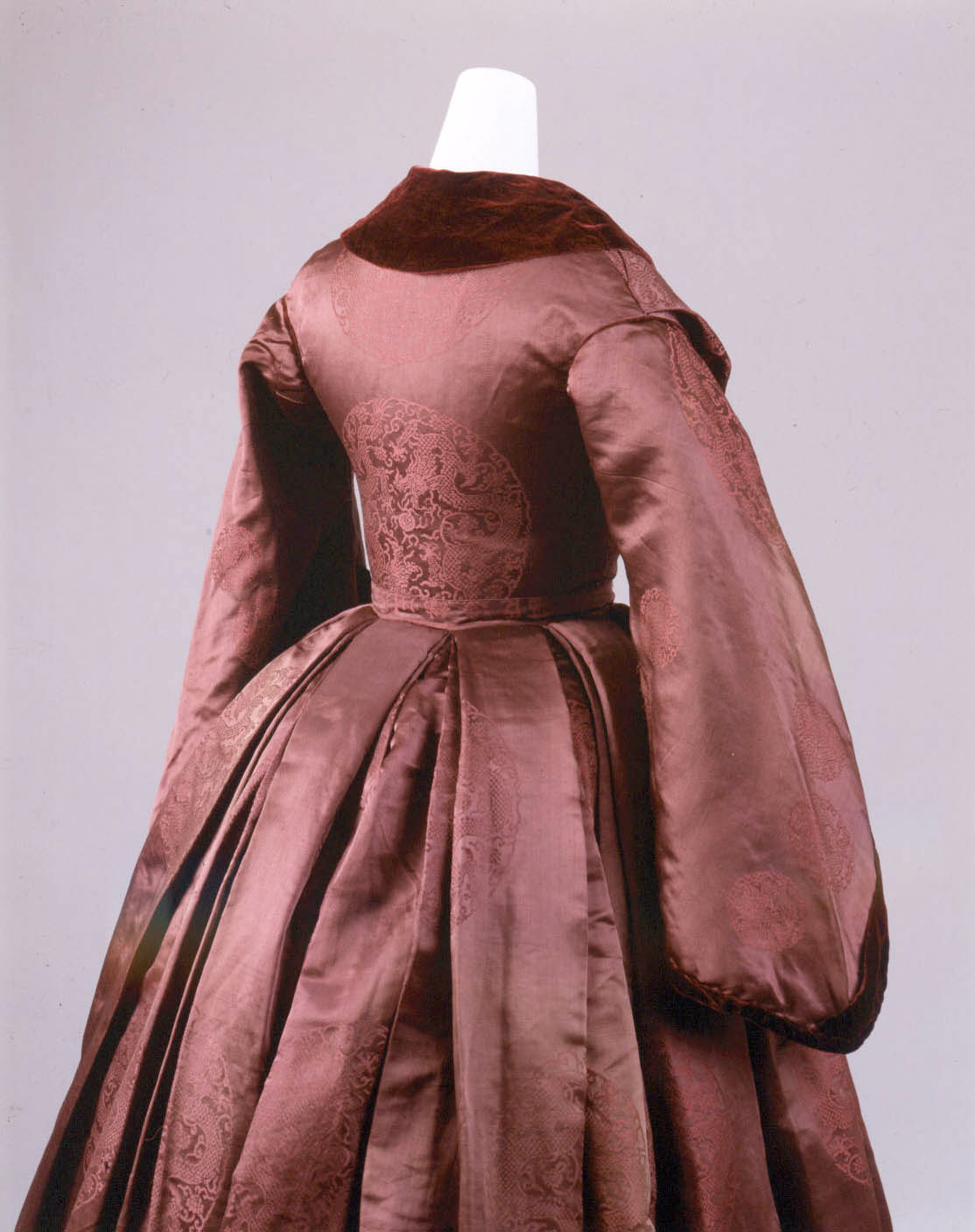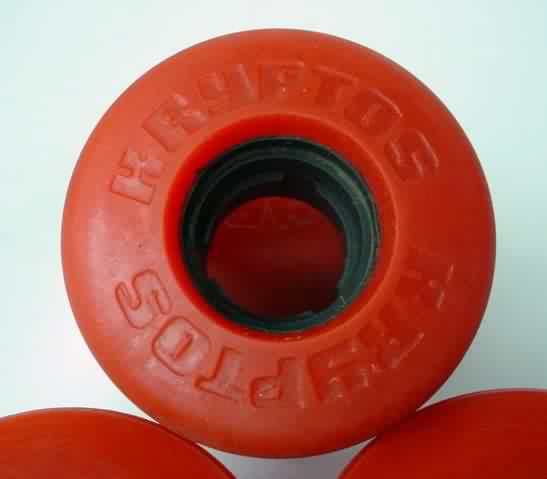Historic Discovery
/ I was delighted that Emlyn found these photos after reading my post on Daoist Shoes. There is no evidence that they were used by Daoists in ritual. But the more orthodox the ritual, the more private it is, so we will never know. But the shoes are used in theater and were widely worn by Manchu women.
I was delighted that Emlyn found these photos after reading my post on Daoist Shoes. There is no evidence that they were used by Daoists in ritual. But the more orthodox the ritual, the more private it is, so we will never know. But the shoes are used in theater and were widely worn by Manchu women.They were understood to do at least two things: One, they gave a feeling of potency to the wearer. Two, they were an imitation of Han (Chinese) womens' esthetics, namely bound feet.
Bound feet, and the reason(s) behind them, is one of the most fascinating and disturbing pieces of Chinese culture. Manchu women were forbidden by the Manchu government (1650~1905) from binding their feet. The government was never happy about Han women doing it, but it was out of their control. Some scholars now say that foot binding was an act of female agency. Men showed their acceptance of subjugation to the Manchu rulers by wearing their hair in a cue (shaving the front and leaving a thin braid in the back). Han woman showed their disdain en mass for this act of subordination by binding their feet. This act conveyed stored potency, as if to say, "We will act at a later date! (This did in fact happen in 1911 when women whose feet were not bound were slaughtered.) (Hat tip to Alan Baumler at Frog in a Well, also scroll down the comments section where some heavy scholars go at it. )
The problem with this explanation is that binding ones feet seems to us like torture, perhaps it is even self-mortification for the misdeeds that led to being conquered by the Manchu. To understand foot binding as an act of potency one has to understand the difference between, what we call in Taijiquan, jin and shi.
Jin is power which manifests through the balls of the feet (peng & ji) or through the heels (lu & an). Shi is potential power which is stored up and does not manifest. It is the power of being able to manipulate the spin of a battlefield simply by ones position. It is not overwhelming force or shock troops. To develop shi, one must not use power from the balls of the feet or the heels. The more common type of jin must be discarded to develop the "higher level" shi.

Thus, by pure accident I discovered that these shoes were actually meant to convey shi (potential power). I was using my memory/dream of them to convey something not well understood about taijiquan and stumbled on the debate about foot binding.
Here is the poem from Frog in a Well:
Get a carpenter’s adze to make the shoe-bottoms
Get a carpenter to make the outside of the shoes
Use a card of yarn
Eight lengths of fine cloth
Altogether it will take three years
To make a pair of embroidered shoes
Call a girl to try the shoes
Whether short or long
The girl stretches her foot
to fit the embroidered shoes
The shoe small the foot large
Constrained and uncomfortable
Awkwardly and crookedly to the back wall
The left foot crushing eight tigers
The right foot crushing nine wolves
Wow, I hope this is taught in the schools some day. (Perhaps they'll even mention my famous blog.)
The best book on foot binding to date seems to be Cinderella's Sisters
http://www.footwearhistory.com/lotusconstruction.shtml
http://www.shoeblog.com/blog/friday-shoe-history-corner-2/
--For an alternate view of why these shoes convey potency, that may give a little bit of wiggle room to anyone caught with their pants down, read this.

 First of all, since I slept most of the day, here is a repost from September about
First of all, since I slept most of the day, here is a repost from September about  The metaphor of the scale is used in martial arts a lot, particularly in the Taijiquan Classics. Most people presume that the metaphor refers to a Chinese business scale, which is in essence a lever with a basket or a weight on either end and a movable fulcrum.
The metaphor of the scale is used in martial arts a lot, particularly in the Taijiquan Classics. Most people presume that the metaphor refers to a Chinese business scale, which is in essence a lever with a basket or a weight on either end and a movable fulcrum. e the wheel of a cart. Sink to one side, then follow. If double weighted, then one will stagnate...." Sounds fishy to me.
e the wheel of a cart. Sink to one side, then follow. If double weighted, then one will stagnate...." Sounds fishy to me.


 I've been looking for information on Daoist ritual shoes. I was sure that somewhere I'd seen special Daoist ritual shoes which are 3 inch high stilts. These shoes make it impossible to put weight on the toes or the heel since the stilt post goes down from the center of the foot. Since the base the the stilt is thicker at the bottom, kind of like a mushroom, there is a plenty of space to balance. The problem is I have been unable to find these shoes (so no picture). Did I dream them? How embarrassing.
I've been looking for information on Daoist ritual shoes. I was sure that somewhere I'd seen special Daoist ritual shoes which are 3 inch high stilts. These shoes make it impossible to put weight on the toes or the heel since the stilt post goes down from the center of the foot. Since the base the the stilt is thicker at the bottom, kind of like a mushroom, there is a plenty of space to balance. The problem is I have been unable to find these shoes (so no picture). Did I dream them? How embarrassing. Dream or not, these shoes represent ultimate shamanic power. The symbolic steps Daoists take in ritual cover huge distances. They circumambulate the empire, the world, and they traverse the distances between stars in the sky.
Dream or not, these shoes represent ultimate shamanic power. The symbolic steps Daoists take in ritual cover huge distances. They circumambulate the empire, the world, and they traverse the distances between stars in the sky. kidney system. The kidneys regulate fluids in the body and they also produce jing. Jing is that aspect of qi which comprises the self reproductive quality in nature, it is stored in the kidney system where it is available both for making babies and for making repairs. Jing produces new tissue when we are injured, bone, muscle, scabs, etc. It is our ancestral memory.
kidney system. The kidneys regulate fluids in the body and they also produce jing. Jing is that aspect of qi which comprises the self reproductive quality in nature, it is stored in the kidney system where it is available both for making babies and for making repairs. Jing produces new tissue when we are injured, bone, muscle, scabs, etc. It is our ancestral memory. I don't think there is a perfect correlation between physical rigidity and a person's inability to freely make choices based entirely on what is real. There is some correlation, but I've met some amazing people with pretty screwed up bodies. Still, sit-ups are dumb. Six-pack abdominal muscles are O.K. against a boxer with gloves on and that's it. Like the "core-strength" fad, sit-ups break the unity of a person's body, they restrict the freedom of the torso and they tighten the breath. Why choose a rigid fate?
I don't think there is a perfect correlation between physical rigidity and a person's inability to freely make choices based entirely on what is real. There is some correlation, but I've met some amazing people with pretty screwed up bodies. Still, sit-ups are dumb. Six-pack abdominal muscles are O.K. against a boxer with gloves on and that's it. Like the "core-strength" fad, sit-ups break the unity of a person's body, they restrict the freedom of the torso and they tighten the breath. Why choose a rigid fate? A person standing on two feet is an unstable structure.
A person standing on two feet is an unstable structure. A teacher's greatest dilemma is whether to teach gates or stone bridges.
A teacher's greatest dilemma is whether to teach gates or stone bridges. can at least communicate with them, but snow is softer than concrete and there aren't a lot of cars on the slopes.
can at least communicate with them, but snow is softer than concrete and there aren't a lot of cars on the slopes.
 realistic for me to ask all my taijiquan students to take up downhill skateboarding.
realistic for me to ask all my taijiquan students to take up downhill skateboarding.